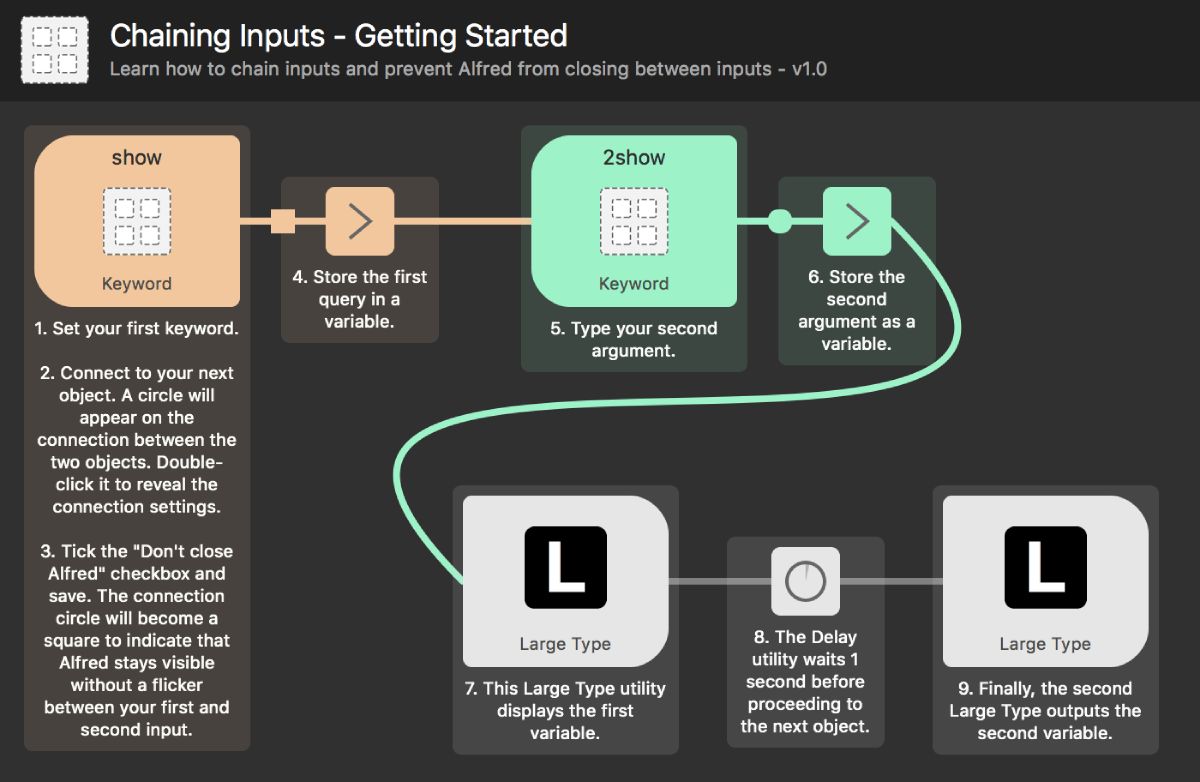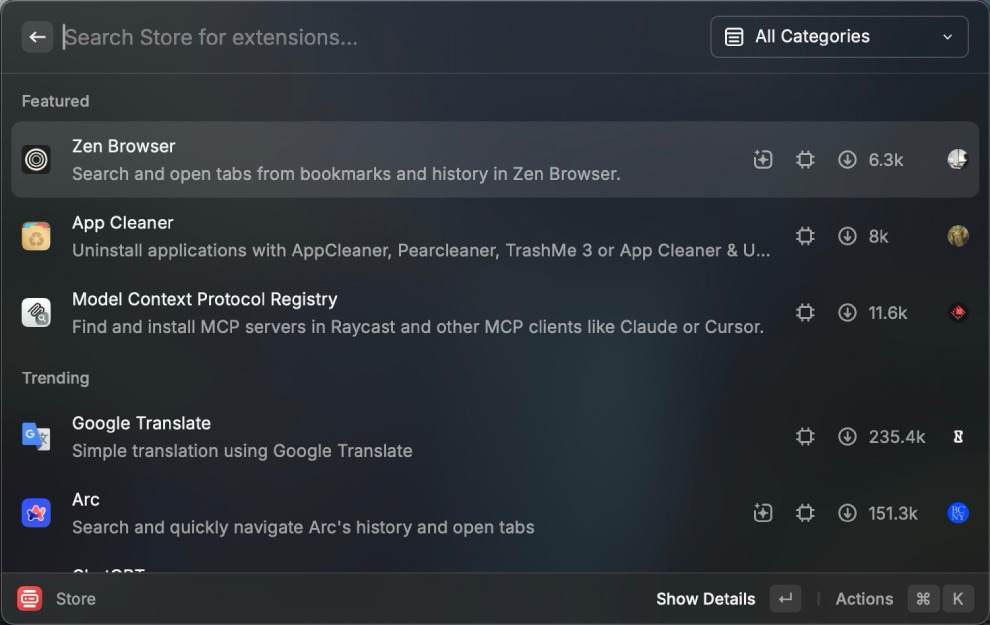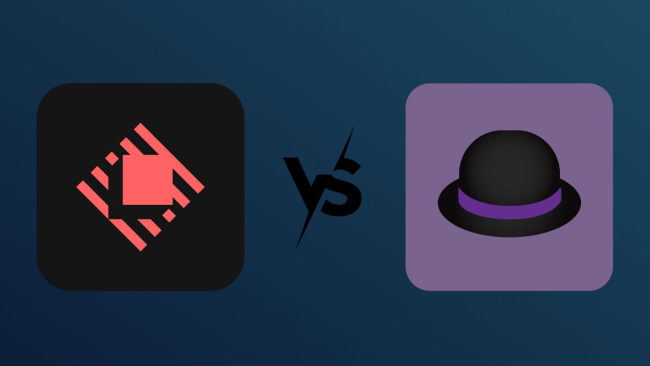So, I’ve always been fascinated by “launcher” apps because I spend a lot of time glued to my Mac, always trying to get as much productivity out of my setup as possible. You know, those super-powerful tools that are only a keystroke away, ready to find files, launch apps, or automate almost anything you can think of.
You’ve come to the right place if you’ve been unsure which of these productivity apps should be a part of your macOS toolkit, or if you’re already using one and want to learn more about the other. Based on my personal experience, I will explain the main distinctions between Alfred Workflows and Raycast Extensions and share some real-world applications.
My objective is to assist you in determining which one works best for your workflow, not to tell you which is unquestionably “better” than the other. You know, those super-powerful tools that are only a keystroke away, ready to find files, launch apps, or automate almost anything you can think of.
Alfred Workflows Vs Raycast Extensions: The Best Mac Launcher for Your Daily Tasks
Alfred was a real workhorse who dominated this area for me for years. However, Raycast’s arrival forced me to take a serious look at things.
The Main Concept: Not Just App Launchers
Fundamentally, Alfred and Raycast are made to do much more than just launch apps. Consider them to be your Mac’s personal command center. You press a hotkey (such as Cmd + Space for Raycast or your own hotkey for Alfred), type a few letters, and presto! No more navigating menus or folders!
You’re opening documents, running commands, or starting intricate automations. We’ll concentrate on their “extension” or “workflow” capabilities, which is where the magic really happens.
Alfred Workflows: What Are They?

Consider a visual programming environment in which a series of actions can be created by dragging and dropping small building blocks. That is an Alfred Workflow, to put it briefly. Hotkeys, keywords, scripts, actions, and outputs are examples of pre-built “objects” that are connected to create highly customized automations; these aren’t code-heavy in the sense that you’re writing an entire application.
My Experiences with Them (Real-World Use Cases):
Supercharged Text Manipulation
In my opinion, Alfred excels in this area. My workflows include:
- Text case conversion: Highlight the text, press my hotkey, type “camelcase” or “lowercase,” and presto—it’s converted. Incredibly useful for note cleanup or coding.
- Look up the chosen text: It instantly searches any text on Google, Stack Overflow, or even the internal wiki of my company when you select it and press a hotkey. Numerous copy-pasting cycles are avoided.
- Generate Lorem Ipsum: I receive dummy text for design mockups after a brief keyword, lorem, and a number. It’s easy, but it saves time.
Quick Actions & System Control:
- Custom Volume Control: Without using the volume keys or navigating to the Sound settings, I created a workflow that allows me to rapidly set my volume to particular percentages (for example, vol 50 for 50%).
- Network Toggle: I can quickly turn my wireless connections on or off from Alfred.
- Deep File Search: Although both are excellent at searching files, I’ve set Alfred up to use special keywords to swiftly search for particular project folders or network drives. Proj , for instance, directs me to the folder for that project.
Integrations
- Task Management: I had a workflow that used natural language to enable me to add tasks to Things 3, my task manager, promptly. It would parse and add the text “to do” to “buy groceries tomorrow at 8 p.m.”
- Developer Tools: Workflows to quickly commit Git changes, restart development servers, and clear my local DNS cache. You can add it to Alfred if you know how to script it using AppleScript, Python, or Bash.
My Favorite Things:
Alfred feels so strong and grown-up. Although some people may find its visual workflow editor intimidating at first, it provides unmatched power for those who truly want to get their hands dirty and create custom tools.
Because a large portion of its magic occurs directly on your computer, it is also very “offline-first,” which makes it feel incredibly dependable and quick. Additionally, if you would rather own your software, the one-time Powerpack purchase (which unlocks workflows) is alluring.
Raycast Extensions: The Only Rival

Raycast then appeared. And it did create a stir. I could tell it had a new outlook as soon as I started using it, particularly on how “extensions” ought to operate.
Raycast Extensions: What Are They?
Raycast Extensions are mainly constructed with JavaScript/TypeScript and React, in contrast to Alfred’s visual blocks. This implies that programmers can design more interactive and aesthetically pleasing experiences right inside the Raycast window.
Consider them to be small web applications that reside within your launcher. Additionally, Raycast boasts an incredibly user-friendly in-app store that makes installation and discovery simple.
My Experiences with Them (Real-World Use Cases):
Combined Productivity Suites:
- Linear/Jira Integration: This is revolutionary. Without launching the Linear app, I can type linear and see my assigned tasks instantly, create new issues, or even look for specific tickets right within Raycast. Jira is no different.
- Notion /Obsidian Search: I’ve gotten used to quickly searching through my notes in Obsidian or Notion. Navigating through my knowledge base is just as important as simply opening the app.
- A Quick Look at the Calendar: I use a calendar extension that lets me add new events using natural language or displays my upcoming events directly in the search bar.
Developer-Friendly Features
- Homebrew Management: Entering brew install will install or search for brew packages. No more rushing to the terminal to handle simple packages.
- Integrations with GitHub/GitLab: Use Raycast to quickly create pull requests, search repositories, or verify build statuses.
- Formatter for JSON: A jumbled JSON string can be beautifully formatted by pasting it and pressing a command. It’s a minor detail, but it saves developers a ton of time.
AI & Daily Conveniences
- Window Management: I can use hotkeys to snap windows to halves, thirds, or custom layouts thanks to Raycast’s great built-in window management.
- Clipboard History: Although Alfred has this feature, Raycast’s interface for clipboard history—which includes images—feels more user-friendly and searchable.
- AI Commands: This one is significant. The native AI integration in Raycast is excellent. I employ commands to:
- Describe the code: To obtain a detailed explanation, highlight a section of code, then press the command.
- Summary page: I can use this to get a brief synopsis of a lengthy article.
- Rewrite the text: helps me change the tone of emails or blog posts.
- Fast AI Conversation: For quick facts or brainstorming, it’s incredibly quick to just open Raycast and type my question to the AI.
What do I Value?
Raycast has a clean, contemporary, and highly polished feel. The experience is seamless because all extensions have the same user interface. Discoverability has greatly benefited from the in-app store for extensions.
Because of its emphasis on React-based extensions, the launcher itself contains incredibly interactive and aesthetically pleasing tools. The generous free tier, which offers many premium Alfred features, is also a big plus.
Simplified Key Differences (From My Perspective)
Now, based on my experience with both, let’s get right to the point and highlight the key differences between these two:
Community Download Vs. Store
Raycast: Features an incredibly modern and integrated Extension Store. It functions similarly to an App Store for your launcher. Because extensions are somewhat curated, this makes finding, installing, and updating them extremely simple and frequently more dependable.
Alfred: Usually, workflows can be downloaded from GitHub or a community gallery. Even though there are thousands, the process of discovery can be more manual, and you may occasionally come across an outdated workflow that hasn’t been updated.
UI/UX for Workflows and Extensions
Raycast: Extensions in Raycast function similarly to native mini-apps. The user interface is standardized, up to date, and frequently highly interactive (think dropdown menus, comprehensive lists, and picture previews). It seems to be a logical progression of macOS.
Alfred: Within the Alfred bar, workflows typically display information in a list-style, text-based format. While functional, it’s generally less visually rich than Raycast’s interactive UIs.
Creating Your Own (Developer Experience)
Raycast: You must be familiar with JavaScript/TypeScript and React if you wish to create your own extensions. For many developers, this contemporary web development stack is ideal, but it raises the entry barrier for non-programmers.
Alfred: Creating workflows frequently entails writing shell scripts, AppleScripts, Python snippets, and connecting visual blocks. Many people may find scripting more approachable and adaptable for rapid automations, particularly those who favor it over UI development.
Unconventional Integrated Features
Raycast: Even in the free edition, a number of strong features are included, including snippets, window management, system commands, a good calculator, quicklinks, and a comprehensive clipboard history. You immediately get a lot of value for your money.
Alfred: Although the “Powerpack,” a paid upgrade, includes many of the “power user” features (such as workflows, clipboard history, snippets, and integrations), the free version is still a good app launcher.
Integration of AI
Raycast: With specialized AI commands and chat features that are intricately woven into the app, Raycast has made a major advancement in artificial intelligence. Raycast has a distinct advantage in this case if AI plays a significant role in your workflow.
Alfred: In contrast to Raycast, Alfred is not a native, deeply integrated feature, although it does have some community-contributed AI workflows.
Pricing Model
Raycast: Provides a very large free tier that meets the needs of the majority of users. For more sophisticated features like AI, cloud sync, and team-shared extensions, they offer a “Pro” subscription.
Alfred: Offers a free version that manages file searches and simple app launches. The “Powerpack” license must be purchased once in order to access workflows and other advanced features. For many, this is a key distinction between subscription and one-time payment.
Utilization of Resources and Performance
They’re both very quick. However, I’ve found that Alfred frequently feels a bit snappier for straightforward file searches and pure, lightning-fast app launches, maybe because of its more conventional, less visually demanding approach.
Because of the underlying web technologies, Raycast, with its React-based extensions, may occasionally use a little more RAM, but this is rarely noticeable in regular use on a modern Mac.
Differences Between Raycast Extensions Vs. Alfred Workflows
Features | Raycast | Alfred |
|---|---|---|
Interface Style | Modern, interactive UI (like mini apps) | Minimal, list-based text UI |
Workflow System | Extensions built with JS/React | Visual blocks + scripting (Bash, Python, AppleScript) |
Extension Discovery | Built-in Extension Store (curated & easy) | Community downloads (manual, sometimes outdated) |
Customization Level | High (for devs comfortable with code) | Very high (especially for scripters) |
AI Features | Native AI chat, summarizer, code explainer | Limited, via community workflows |
Offline Support | Cloud-connected, some features online | Mostly offline, local-first |
Resource Usage | Slightly heavier (React-based) | Very lightweight |
Free Features | Generous free tier with advanced tools | App launcher only; Powerpack needed for full features |
Pricing Model | Free + Pro subscription (for AI, sync, teams) | One-time Powerpack purchase |
Best For | Power users, scripters, and privacy-focused users | Power users, scripters and privacy-focused users |
What Should You Pick? My Verdict
Here’s my opinion, based on my extensive use of both, and how you might reach your own:
Choose Raycast if:
- Right out of the box, you want a highly integrated, contemporary, and aesthetically pleasing experience.
- You adore the concept of a carefully chosen extension store for simple management and discovery.
- You’re enthusiastic about AI integration and want it to be easily accessible.
- You value a sizable free tier that includes a lot of sophisticated features.
- As a developer who is proficient in React and JavaScript/TypeScript, you may wish to create your own tools.
- You want snippets, clipboard history, and great window management built in.
Continue with Alfred or start with it if:
- Your top priorities are deep automation through scripting (Bash, Python, AppleScript) and the utmost customization.
- You value an application that has been around for a long time, is very stable, performs exceptionally well, and feels like it belongs on macOS.
- For premium features, you favor a one-time purchase over a subscription model.
- You enjoy connecting “blocks” to create automations and do best in a visual workflow editor.
- You prioritize locality and privacy over cloud-connected features.
Is it possible to use both? Of course! Some individuals, like my friend Raghav, do. For instance, you could use Raycast for its AI capabilities and contemporary extensions for app integrations (like Notion or Linear) and Alfred for its lightning-fast file searching and certain outdated workflows you’ve mastered over the years. However, I personally prefer to choose one and stick with it for simplicity’s sake and to avoid mental overhead.
Raycast is now my daily driver. My productivity has really increased as a result of its flawless AI integration, the store’s ease of use, and the extensions’ sheer polish. Even though I still respect Alfred’s unadulterated strength and adaptability, Raycast’s contemporary methodology and emphasis on genuinely integrated “app-like” experiences within the launcher have won me over.
So, I can only suggest that you try both. Both of them provide free versions so you can experience their essential features. Explore Raycast’s extensions for a week, and then spend another week with Alfred workflows with some of the most well-liked workflows. Find out which one works best for you, which one fits in better with your daily routine, and which one actually speeds up your tasks.




Leave a comment
Have something to say about this article? Add your comment and start the discussion.